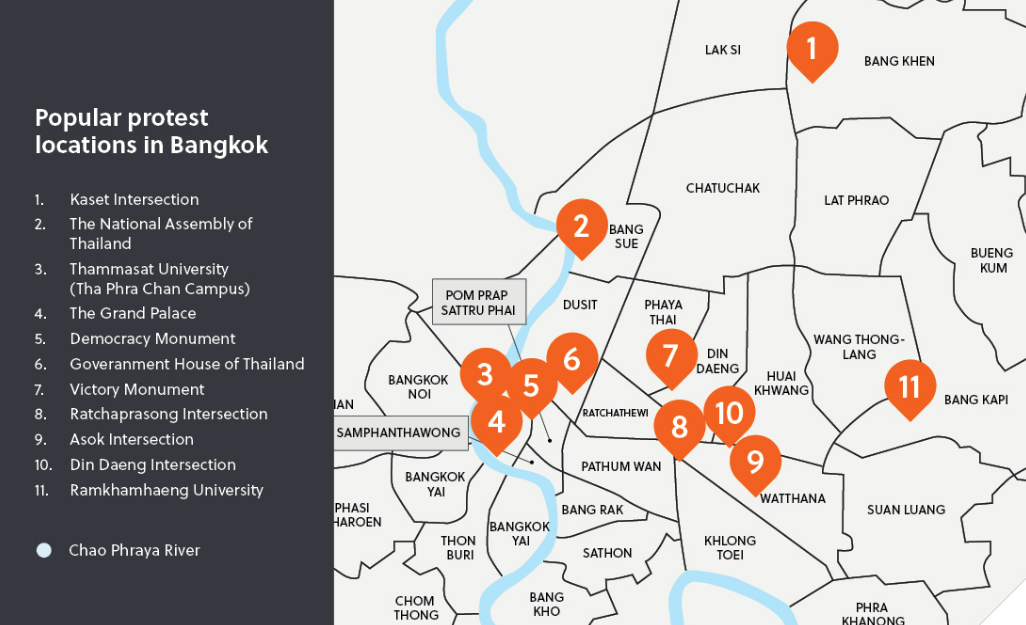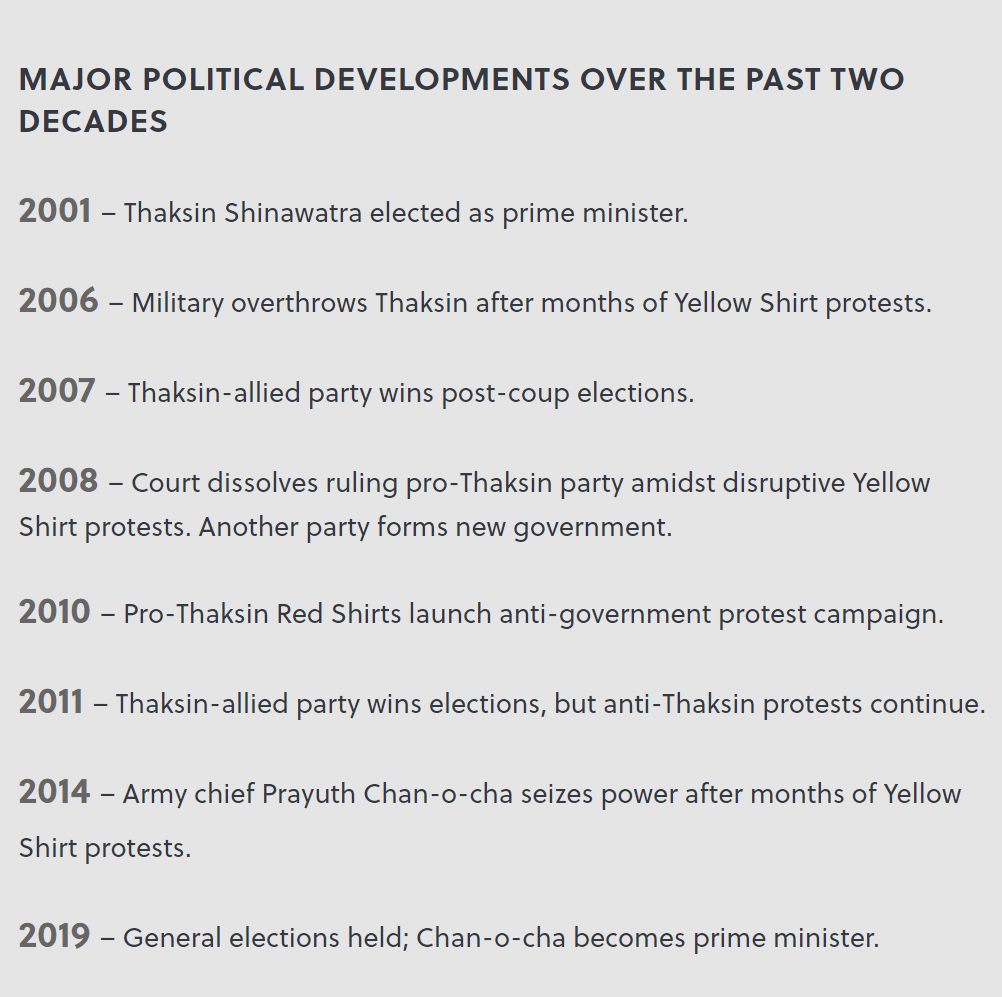Deep seated: Thailand's elections and prospects for political (in)stability
The 14 May election is a litmus test for the state of political division in Thailand. On the one side, incumbent Prime Minister Prayuth Chan-o-cha, who leads the conservative United Thai Nation Party and who has been in power since staging a military coup in 2014, has the support of the military. On the other, Paetongtarn Shinawatra, the daughter of self-exiled former Prime Minister Thaksin Shinawatra, led the charge for the liberal Pheu Thai Party and holds growing popular support, among (some of) the electorate. Already, amid the intensifying contest in the lead up to the vote, many commentators had focused as much on who the winning party would be as they had on how the losing side would react.
BETWEEN DEMOCRACY AND MILITARY RULE
These concerns are warranted. Since the early 1990s, Thai politics have been characterised by significant political instability and over the past two decades, political turmoil has largely centred on the rise and fall of Thaksin and Thaksin-backed parties. Thaksin came to office in 2001 off the back of rising popularity among rural and poor citizens. However, he had little support among the country’s wealthy elite. These deep-seated divisions had come to a head by 2006, when anti-Thaksin protests by ‘Yellow Shirt’ conservative activists, partly instigated by corruption allegations against the prime minister, were met by growing ‘Red Shirt’ demonstrations by Thaksin’s supporters. Following months of persistent unrest, in 2006, the military staged a coup to overthrow Thaksin’s government, forcing Thaksin into self-exile in Dubai.
Although his party had remained popular in the north and the north-east countryside in his absence, conservative opposition to Thaksin’s political influence has intensified. Thaksin-backed parties’ subsequent forays into government ended in a court-backed dissolution of the party in 2008, and another military coup in 2014 amidst sustained Yellow Shirt unrest. The latest elections have once again pitted the conservatives against the liberals, raising concerns that the former may takes steps to undermine democracy in Thailand to secure victory, while the latter will see this as the perfect opportunity to renew their political relevance.

OPERATIONAL CONSIDERATIONS
Thailand’s conservative and liberal parties have demonstrated the capability to organise large and regular protests. Historically, the conservatives have staged highly disruptive protests, and seized government buildings and airports. Liberal parties have similarly staged unruly crowd control measures but have had to contend with extreme protest controls imposed by authorities, including the use of live ammunition, arrests, and detention without credible charges.
In the event of renewed demonstrations, precedent suggests that the following locations and assets are likely to be most impacted:
Prominent public locations
Central Bangkok has long been the epicentre of protest activity, where activists tend to block major roads, causing significant traffic and related commercial disruptions. Popular protest locations include the Democracy Monument; Victory Monument; Din Daeng Intersection; Ratchaprasong Intersection; Ratchadamnoen Avenue; Government House; the National Assembly; Kaset Intersection; and Asoke Intersection.
Government buildings
In addition to protesting in front of government buildings, Yellow Shirt activists have occupied government facilities or disrupted government services in the past. For instance, in 2013, Yellow Shirt protesters occupied multiple government offices, including the Ministry of Finance and the Ministry of Foreign Affairs. Activists also besieged and occupied Government House from August to December 2008.
Airports
In 2008, Yellow Shirt protesters blocked the main expressway to Bangkok’s Suvarnabhumi Airport, occupying the facility as well as Don Mueang Airport for ten days. In 2017, a court ordered protest leaders to pay damages worth more than USD 15 million in total for the airport blockades.
Educational institutions
High schools, colleges and universities also remain popular protest locations, especially for liberal youth. In recent years, there have been occasional protests as well as clashes between rival protesters in Thammasat University and Ramkhamhaeng University in Bangkok, for example.

RIPE FOR REMEDY
Thailand watchers are tracking the post-election context closely, hoping to see the first of many requisite steps needed to improve Thailand’s democratic standing. All the while, they wait to see whether the latest vote will be the kindling for further political unrest in the country.
